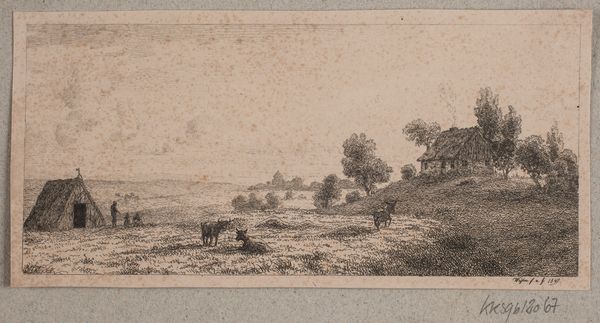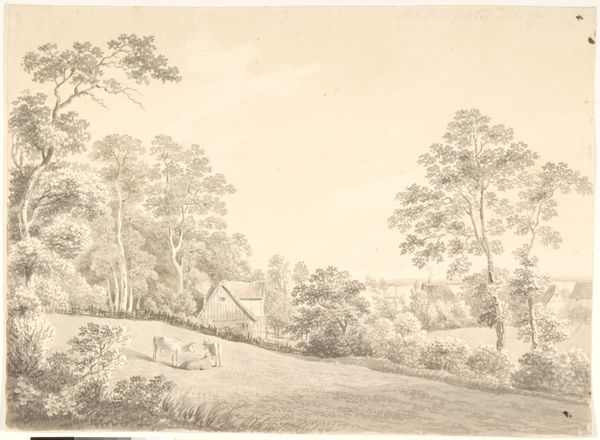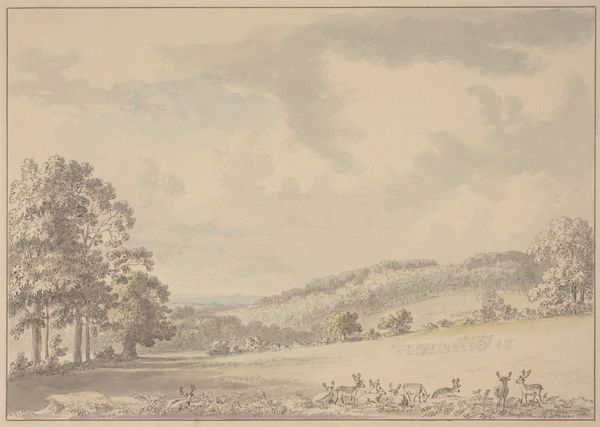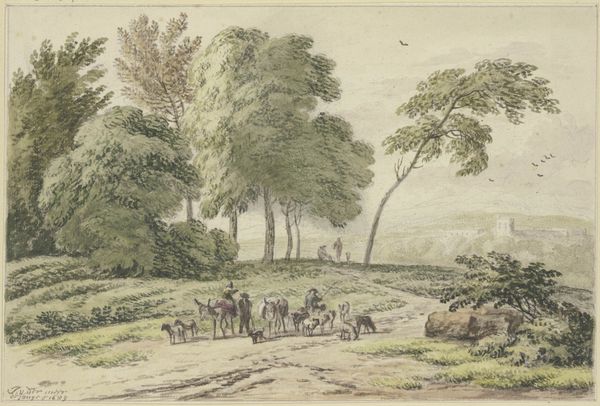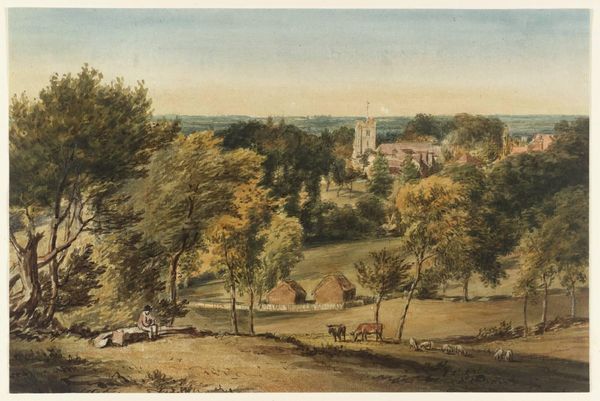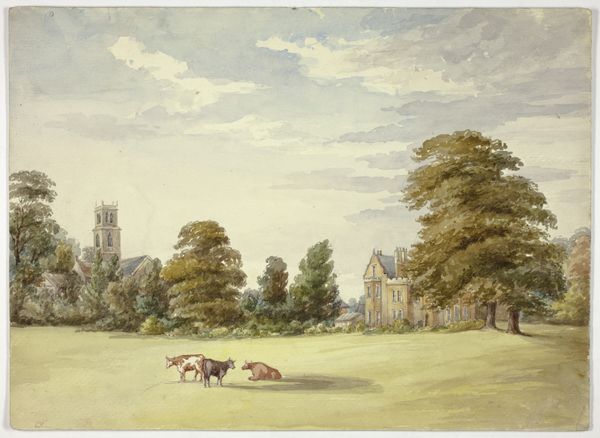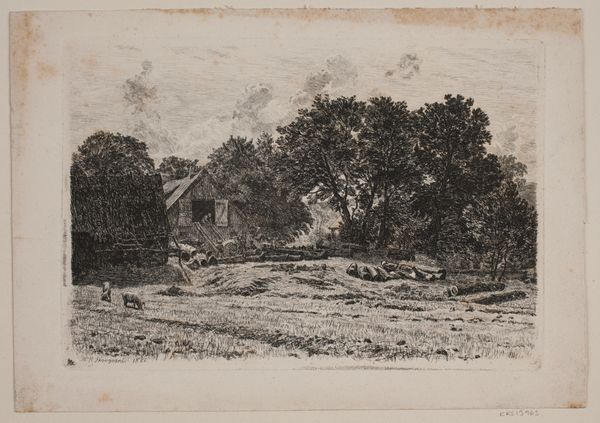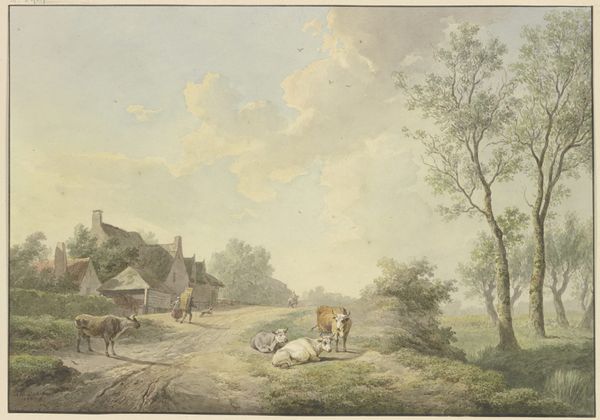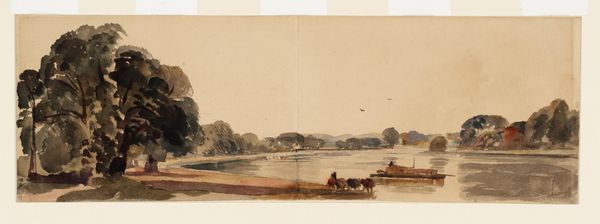
drawing, plein-air, watercolor
#
drawing
#
plein-air
#
landscape
#
figuration
#
watercolor
#
romanticism
#
watercolor
Dimensions: overall: 21.9 x 36 cm (8 5/8 x 14 3/16 in.)
Copyright: National Gallery of Art: CC0 1.0
Curator: This is Peter De Wint’s "A Meadow with Cattle near Glastonbury," an atmospheric watercolor drawing. Editor: It’s strikingly serene. The muted colors create a dreamlike quality. What I appreciate most is the arrangement of the components—trees, tower, and especially, the placement of the cows—which seem intentionally posed to allow your eye to calmly absorb everything within view. Curator: De Wint, a prominent figure in British landscape painting, made many of his works outdoors, so in ‘plein air.’ The production of these images hinged greatly on the ability to set up an easel anywhere, and this one shows his method and direct interaction with the environment, as well as his emphasis on drawing. Editor: Yes, but within this pastoral vision, consider how De Wint captures light—it dissolves forms, unifying them into this nearly monochrome harmony of beiges and pale greens. This focus on color and the overall composition is pure Romanticism. I appreciate its philosophical dimensions in representing an idealistic harmony of the people in balance with nature. Curator: Indeed. Consider the implications of rendering Glastonbury: as an outdoor study of rural labor and agriculture as it connects to a network of exchange, showing the economic relationship of these cattle grazing in a specific locality. The location itself tells us much. Editor: But does that overshadow the aesthetic achievement? Look closely at how he defines the distant tower using soft brushstrokes, yet gives it structural integrity. And the varied texture of the landscape—grass, trees, sky—all created through watercolor washes is sublime. Curator: No, not at all. I am in agreement that the artistic achievement goes far beyond its historical documentation; however, the role the artist assumes—one in service to or participating in those relations of material conditions—deserves closer attention. The scale alone evokes the distance implied between an urban consumer and the rural manufacturer of its goods. Editor: Perhaps we should see this tranquil artwork as representing multiple meanings beyond any single viewing, from the purely aesthetic, which speaks of form and harmony, to this commentary on material reality that you’ve shared, suggesting networks and rural economies. Curator: I would suggest that through attention to process we also arrive at its aesthetics. Editor: Precisely, giving the artwork multiple voices through material means or visual experience.
Comments
No comments
Be the first to comment and join the conversation on the ultimate creative platform.

